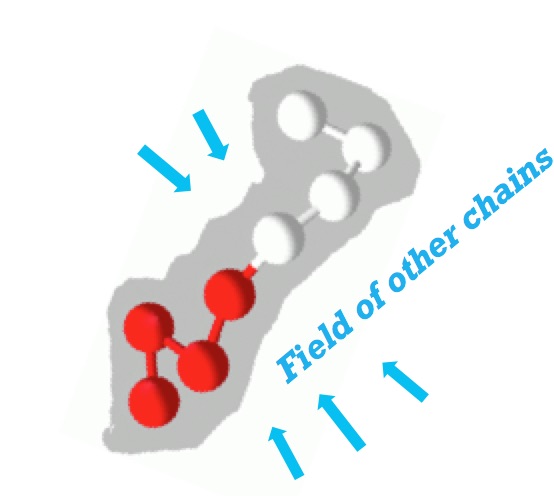Atomistic simulation is the theoretical and computational modelling of what happens at the atomic scale in solids, liquids, molecules and plasmas. It could be perform throughout Molecular Statics and Molecular Dynamics [1, 2].
Molecular dynamics simulations follow the same approach of a real experiment:
The first step is the preparation and the description of a sample of the material we wish to study. This sample is a model configuration consisting in N atoms. Each elementary particle is modelled by point masses, with three degrees of freedom (x,y,z space directions). A mass m_i, a position r_i, a velocity v_i and an acceleration a_i are associated to each particle. The total Energy E_i is made up by the kinetic and potential contributions. The latter is due to an external and/or internal field acting on each particle and to the pairwise potentials caused by all the other atoms within the system. The choice of how to describe the interaction potential is a key point of the Molecular Dynamics, because it affects:
- the dynamics of atoms and molecules;
- the computational time: the more the terms are included in the potential, the more time is required for calculations.
A widely used model to describe the potential energy is given by the summation of bonded and non-bonded interactions. Finally, the total force Fi is related to the gradient of the total potential energy of the system: F_{i} =-gradUp(r_{i}).
Thus the Newton equations of motion are solved numerically until the thermodynamic properties of the system no longer change with time. The investigated properties could be temperature, density, pressure profiles and a lot of derived quantities. Measurements are mostly subjected to statistical noise, thus the longer averaged they are, the more accurate they become. For this reason it is a good practice in a MD simulation to perform a energy minimisation and a system equilibration before carrying out the time of measurements.
The Bresme’s computational chemical physics group of Imperial College of London widely uses Molecular dynamic simulations to investigate:
- Stability and assembly of nanoparticles at fluid interfaces;
- Proteins at interfaces [4];
- Bilayer elastic properties [5];
- Phase coexistence of biological membranes [3, 6];
- Interactions of nano-objects and bio-surfactants with skin lipid bilayers.
Softwares mainly used: Gromacs, LAMMPS.
[1] Daan Frenkel and B. Smit, Understanding Molecular Simulation, Second Edition: From Algorithms to Applications (Computational Science). Academic Press, 2 edition, 2001. [2] D. C. Rapaport, The Art of Molecular Dynamics Simulation, Cambridge University Press, New York, NY, USA, 1996. [3] Yawen Zhang, Anders Lervik, John Seddon, Fernando Bresme, A coarse-grained molecular dynamics investigation of the phase behavior of DPPC/cholesterol mixtures, Chemistry and Physics of Lipids, 2014, ISSN 0009-3084. [4] Lervik et al, Heat transfer in protein-water interfaces, Physical Chemistry 2010 12 (7), 1610-1617 [5] Tarazona, Pedro and Chacón, Enrique and Bresme, Fernando, Thermal fluctuations and bending rigidity of bilayer membranes, The Journal of Chemical Physics, 139, 094902 (2013), DOI:http://dx.doi.org/10.1063/1.4818421 [6] Delara Mohammad-Aghaie, Emilie Macé, Charles A. Sennoga, John M. Seddon, and Fernando Bresme, Molecular Dynamics Simulations of Liquid Condensed to Liquid Expanded Transitions in DPPC Monolayers, The Journal of Physical Chemistry B 2010 114 (3), 1325-133

